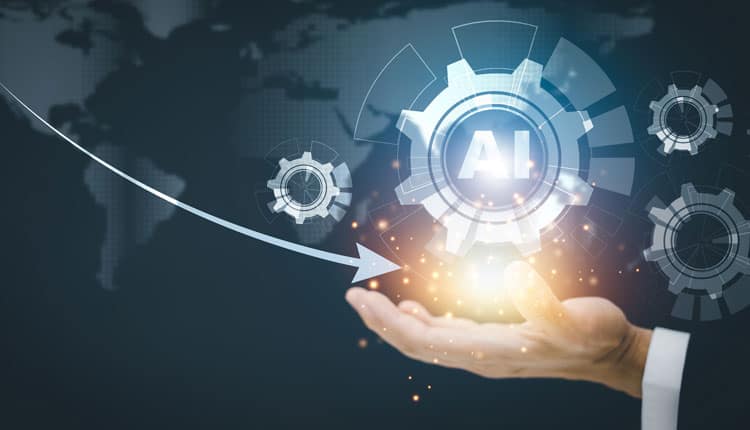By Cheryl Ajluni, Director, Industry Solutions, Keysight
Sustainability is a top priority for all organizations today—for example, one-third of Europe’s largest companies have pledged to reach net-zero emissions by 2050, according to Accenture. Yet the firm also found that enterprises must significantly accelerate their efforts over the next decade, as just 9% of companies are currently on track to achieve this goal.
One way organizations can reach net zero and address other sustainability efforts is through the combined power of digital twins and AI. The technologies provide companies with unparalleled insights into their operations that can then inform sustainability improvements and help them achieve climate goals. For example, digital twins can be used to test various scenarios and help companies determine the best strategies for reducing energy consumption and emissions.
Technology Advances Accelerating Digital Twin Adoption
Of course, digital twins have already been deployed in various ways. For example, helping healthcare researchers create highly accurate models of the heart, lungs, or other organs to improve clinical diagnoses, education, and training. The energy industry also offers numerous use cases for digital twins, including building digital models to guide oil drilling efforts in real time.
But recent technological advances in simulation and modeling capabilities, increased
deployment of IoT sensors and a more widely available computing infrastructure mean
that company can increase their reliance on digital twins. And when organizations augment digital twins with AI, they can realize additional benefits—for example, running simulations to investigate & what-if scenarios and gain a deeper understanding of cause
and effect.
There are numerous examples of how these technologies can enhance operations,
including their ability to inform a greener world. With that in mind, below are a few use
cases that demonstrate how digital twins and AI are driving sustainability improvements
across industries.
Smart Industry
By 2025 89% of all IoT platforms will include digital twins, transforming how industrial
and manufacturing facilities operate and providing granular insights to enhance sustainability efforts. Examples include:
· Investigating ways to reduce energy consumption through a deeper understanding of where energy loss is occurring
· Using predictive analytics to determine how emissions could be reduced by making various changes
· Conducting risk assessments to identify operational weaknesses that could lead to accidents with an environmental impact
GE Digital is one organization that has pioneered the use of digital twins and AI for
sustainability improvements. Through its Autonomous Tuning Software, the company
creates a digital twin of its gas turbines to find optimal flame temperature and fuel splits.
The technology senses environmental and physical degradation changes in real time,
facilitating automatic adjustments to ensure that the gas turbines are running efficiently
at low emissions and acoustic levels. With the technology, power generation plants
have realized carbon monoxide reduction by 14% and decreased nitrous oxide
emissions by 10% – 14%.
Smart Cities
City planning, management, and optimization is another area poised to transform
through the combined power of digital twins and AI. These smart cities offer numerous
benefits—addressing food insecurity, increasing mobility, and helping identify criminal
activity to name just a few. Smart cities also have much to offer in the form of
addressing sustainability goals.
With digital twins and AI, city governments can understand, quantify, and predict the
impact of their decisions on the environment and test potential scenarios to determine
the most environmentally beneficial situation.
For example, Transport for London (TfL) is using digital twins to gather data on noise,
heat, and carbon emissions throughout the Tube network. Prior to deploying the
technology, TfL staff could only inspect assets when the Underground was closed
between the hours of 1 am-5 am. With the real-time network access afforded by the
digital twin, TfL can now assess locations throughout operating hours and also spot
data that was previously undetected by the human eye, such as faults and heat and
noise hotspots. Officials believe the project will be a key component of Mayor Sadiq
Khan’s goal of a zero-carbon rail system by 2030.
As carbon neutrality becomes a priority for cities across the globe, expect the usage of
digital twins and AI to increase.
Smart Buildings
Just as digital twins and AI can help city sustainability efforts, they are also increasingly
being utilized to create smart buildings. The technologies ensure sustainability is top of
mind from the outset, enabling construction managers and other stakeholders to
develop virtual representations that can evaluate a building’s anticipated carbon
footprint during the design phase.
This was the approach developers took when designing The Hickman in London, which
has become the world’s first building to receive a Platinum rating for smart buildings
from SmartScore. During construction, the digital twin was connected with the building’s
management system through a variety of sensors, providing an integrated view of data
such as occupancy, temperature, air quality, light levels, and energy consumption. Not
only did this enable the developers to optimize energy performance and reduce carbon
emissions, it also laid the framework for future sustainability enhancements, as these
can be simulated first via Hickman’s digital model.
There is increasing regulatory pressure on the construction industry to design greener
buildings, so we can only expect that more developers will follow Hickman’s lead
and look to address sustainability concerns before breaking any new ground.
Becoming a more sustainable industry and, ultimately, the planet has been an elusive goal
for the last several years. But with recent advances in AI and the increased adoption of
digital twins, this vision is poised to be realized. Now is the time for organizations to
harness the combined power of these technologies to obtain insights at every stage of
operations that will support a more sustainable, less carbon-intensive economy at a
micro-level—and a greener world overall.



